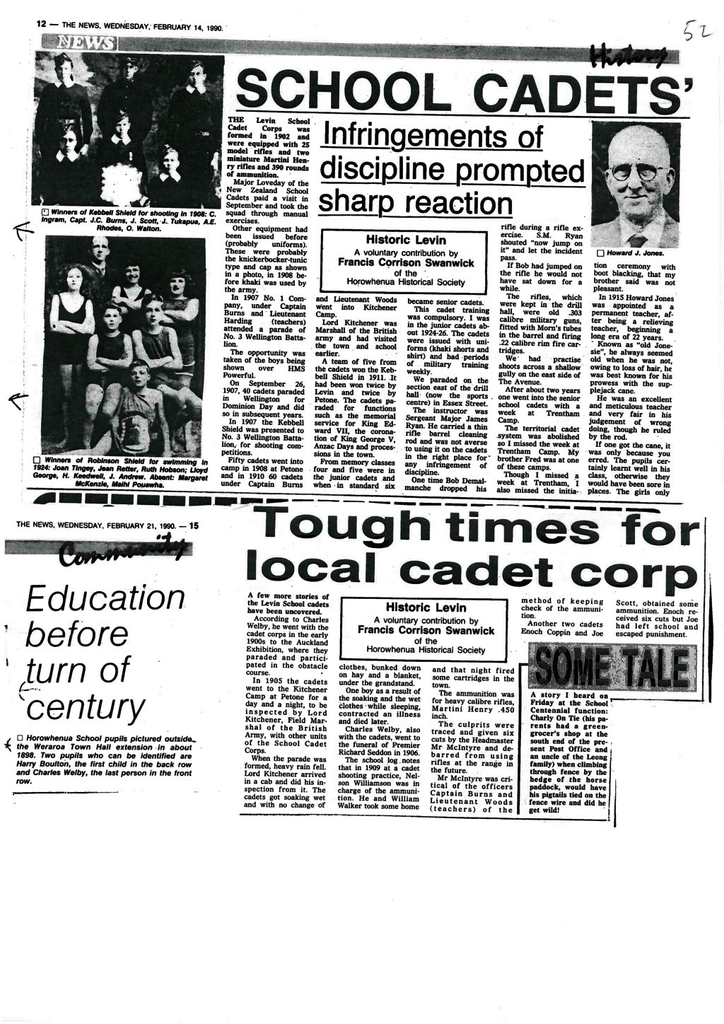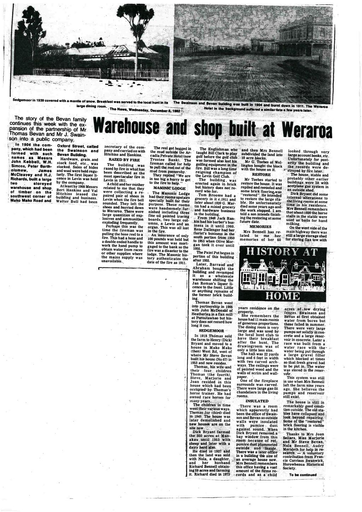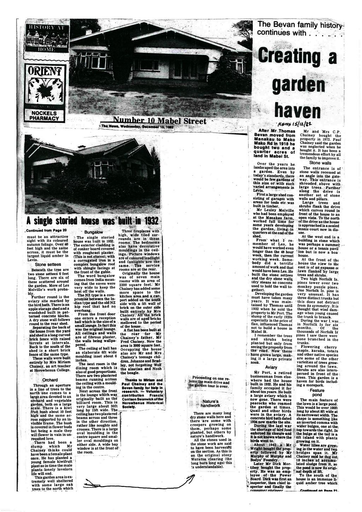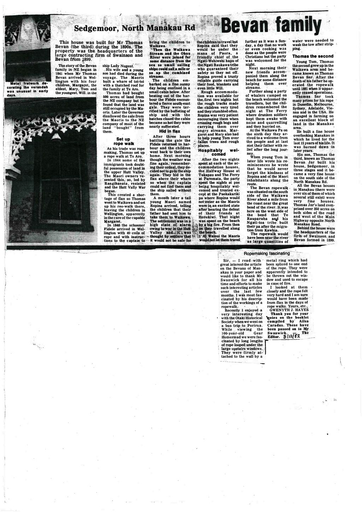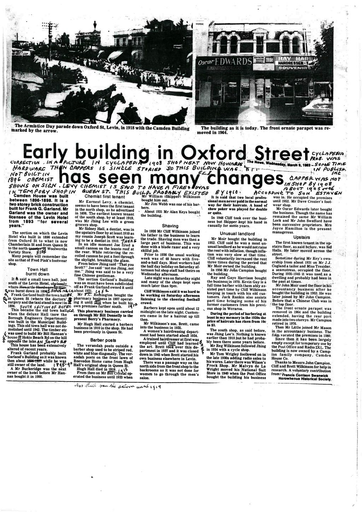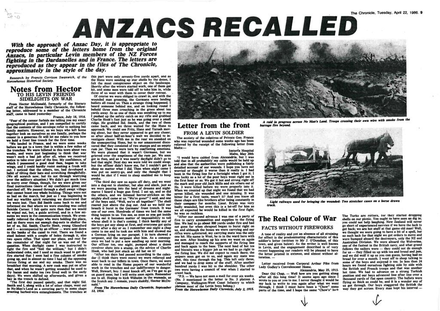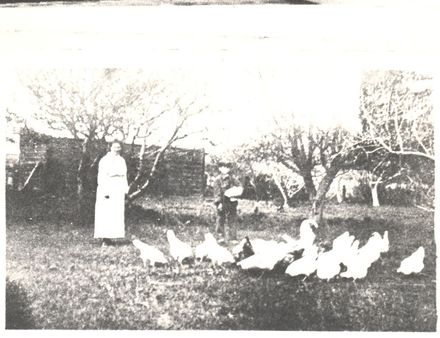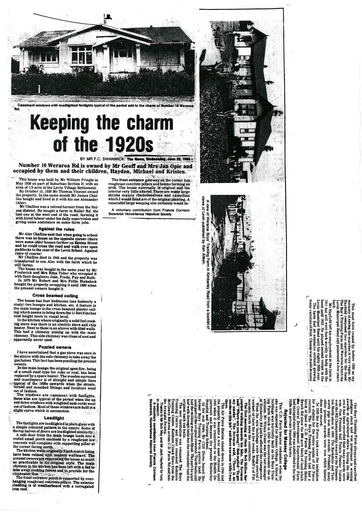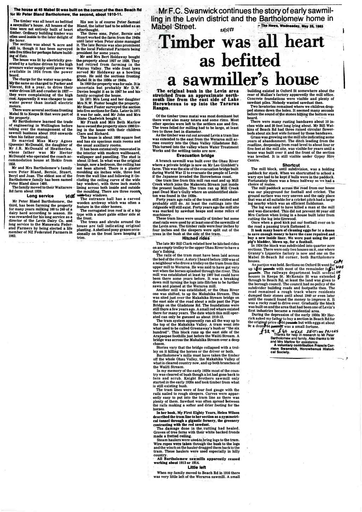School Cadets Training - Model Exercise
- Description
The Levin School Cadet Corps was formed in 1902 and were equipped with 25 model rifles and two miniature Martini Henry rifles and 390 rounds of ammunition.
Major Loveday of the New Zealand School Cadets paid a visit in September and took the squad through manual exercises.
Other equipment had been issued before (probably uniforms). These were probably the knickerbocker-tunic type and cap as shown in a photo, in 1908 before khaki was used by the army.
In 1907 No. 1 Company, under Captain Burns and Lieutenant Harding (teachers) attended a parade of No. 3 Wellington Battalion.
The opportunity was taken of the boys being shown over HMS Powerful.
On September 26, 1907, 40 cadets paraded in Wellington for Dominion Day and did so in subsequent years.
In 1907 the Kebbell Shield was presented to No. 3 Wellington Battalion, for shooting competitions.
Fifty cadets went into camp in 1908 at Petone and in 1910, 60 cadets under Captain Burns and Lieutenant Woods went into Kitchener Camp.
Lord Kitchener was Marshall of the British army and had visited the town and school earlier.
A team of five from the cadets won the Kebbell Shield in 1911. It had been won twice by Levin and twice by Petone. The cadets paraded for functions such as the memorial service for King Edward VII, the coronation of King George V, Anzac Days and processions in the town.
From memory classes four and five were in the junior cadets and when in standard six became senior cadets.
This cadet training was compulsory. I was in the junior cadets about 1924-26. The cadets were issued with uniforms (khaki shorts and shirt) and had periods of military training weekly.
We paraded on the section east of the drill hall (now the sports centre) in Essex Street.
The instructor was Sergeant Major James Ryan. He carried a thin rifle barrel cleaning rod and was not averse to using it on the cadets in the right place for any infringement of discipline.
One time Bob Demalmanche dropped his rifle during a rifle exercise. S. M. Ryan shouted “now jump on it” and let the incident pass. If Bob had jumped on the rifle he would not have sat down for a while.
The rifles, which were kept in the drill hall, were old .303 calibre military guns, fitted with Morn’s tubes in the barrel and firing .22 calibre rim fire cartridges.
We had practice shoots across a shallow gully on the east side of The Avenue.
After about two years one went into the senior school cadets with a week at Trentham Camp.
The territorial cadet system was abolished, so I missed the week at Trentham Camp. My brother Fred was at one of these camps.
Though I missed a week at Trentham, I also missed the initiation ceremony with boot blacking, that my brother said was not pleasant.
In 1915 Howard Jones was appointed as a permanent teacher, after being a relieving teacher, beginning a long era of 22 years.
Known as “old Jonesie”, he always seemed old when he was not, owing to loss of hair, he was best known for his prowess with the supplejack cane. He was an excellent and meticulous teacher and very fair in his judgement of wrong doing, though he ruled by the rod. If one got the cane, it was only because you erred. The pupils certainly learnt well in his class, otherwise they would have been sore in places. The girls only received the cane on their hands. He was teaching Class 5 in my memory in 1925.This is one incident that I well remember. I came out of school to go home. From outside the gate of the “little” school I saw a crowd of boys clustered together in the horse paddock behind the infant school - a fight!
Incidentally, the horse paddock had an entrance by the present dental clinic.
I turned to go back to see the fight, then I saw “Jonesie” walking across the tennis courts towards the horse paddock, swishing his supplejack, in practise sweeps. Probably the cheering boys alerted him. I stopped where I was. The long hedge to the north concealed his approach catching them unawares. Some of the boys broke for the hedge but if he recognised them he called them back. To not have come back, the punishment would have been worse next day.
A few boys got through to safety and scuttled across to the north entrance of the school. “Jonesie” lined up the 50 or so boys. Some went to the end of the queue hoping he would tire, but he would never have tired. Each boy got one bend over, as he moved up the line. The two fighters got more.
Spelling was Howard Jones’ speciality. If one made too many mistakes, it was costly. Though well on in years, with memory not as good as earlier, I can spell reasonably well still and I attribute this to supplejack rules. Mr Jones other speciality was teaching children to swim and also teaching lifesaving in the water.
He must have taught hundreds and even thousands to swim. When one could swim across the width of the Levin Coronation Swimming Baths 2s 6d (25c), an immense sum in those days to a child, was donated by dentist, Mr Stuart Mackenzie.
Howard also trained teams in swimming which won the Robertson Shield (an inter-school competition) many times.
He was first assistant from about 1926 until he retired in 1937. He still kept up his interest in the school for many years and also in swimming. He edited the 1940 school jubilee booklet and the Levin Borough 1956 jubilee booklet, “Bush to Borough”.
School picnics were held in some years, in February after school had resumed.
Before 1900, Lake Horowhenua was a favourite site, as was Levin Park Domain.
Some were held at Paekakariki. One was held there in 1901 with 105 pupils from the Levin School and 83 pupils from the Horowhenua School attending.
After the new school was opened in 1903, Plimmerton was the venue several times. On one trip in 1921, 547 pupils and teachers attended along with 382 adults.
The rail fare was well reduced. Probably the school hired the train. I can remember going to Plimmerton at least twice. We took our own food and drink but some goodies were handed out by the teachers.
Swimming and paddling were indulged in and looking among the rocks for a baby octopus or other weird fish life.
For the boys walking around the beach to Paremata to see the old fort was a must. A cave with a well of water in it, high up on the eastern hill always attracted the boys.
Titbits from The Levin School Log
Photo shows Horowhenua School Group, circa 1898.
Dora Strawbridge and Frances Morn received four cuts for repeated neglect of learning spelling in 1893.
Mr Welby complained to the committee that his daughter had been kept in very late in school in 1898. Enquiries revealed that the teacher had forgotten her and locked the door and she was not released until the cleaner arrived.
In 1903 Mr McIntyre applied to have a wash-house built at his house (next to the now Presbyterian Church). The committee decided to build one out of one of the school sheds.
It was discovered in 1904 that several desks in four rooms were infested with what seemed to be lice. The children using these desks were suspended for a week or until they were free of these vermin. The desks were washed with a solution of hot water and caustic soda. Next day all the vermin had not been cleaned out. The school was closed for the day. It was reported to Mr Brownlee, an inspector for the Health Department. He and Mr Day, a chemist, and others said they were body lice. Mr McIntyre took some to Dr Mackenzie who at first agreed with the others, but after microscopical examination decided they were wood lice in old desks. N. B. The insects must have been very tiny baby wood lice. The desks were sprayed with carbolic solution and except for a slight smell of carbolic, the problem was cured.
One hundred and seventy pinus murticata trees were planted in 1904. This probably would have been the hedge between the horse paddock and the main grounds. Some years later 60 macrocarpa trees were planted in gaps where original trees had died. Whether this was in the above mentioned hedge is not certain.
The battleship HMS New Zealand came to Wellington in 1913. The funding for building this ship had largely been contributed by people in New Zealand. On April 19, 1913, all pupils over 11 years of age were taken to Wellington to see over the ship, fares being paid by the Education Department.
Three days earlier 200 of the crew, the starboard watch, had come to Levin and were welcomed at the back of the railway station by a large gathering, including the school children. A procession led by a Maori party and the Levin Brass Band and the Weraroa Training Farm Band proceeded to the race-course for sports and a football match between a team from the crew and a Levin team. Lunch was provided for the crew.
The committee raised £25 ($50) partly from a school concert and £10.1s.6d ($20.15) from a picture benefit at the King’s Theatre (later Cosmos). With a subsidy and a grant from the Education Board, the grounds would be asphalted.
The pupils took part in the parade for the first Anzac Day in 1916. The school closed and the pupils went home when news came that Turkey had capitulated and also in 1918 when Germany capitulated in World War I. I well remember those holidays.
Dentist Mr Stuart Mackenzie began a scheme of attending to the dental needs of pupils in 1919 at the school. For £1 a year ($2) teeth were examined and any dental work needed done four times a year. Forty pupils were done at the start. Mr Jack Bartholomew did the work. It was done in the science room or the cookery room. I was one of the patients. Sometimes more punishment was inflicted than the teachers could give us. No painkiller then for drilling, etc. The drilling of the teeth was done with a pedal drill.
School opening in February 1920 was delayed a week owing to the influenza epidemic. The school had been used as a hospital.
The first plane seen in Levin passed over Levin in 1920. The pupils were let out of school to see it fly over. It was a wonderful sight to us.
Mr McIntyre resigned in 1922 with Mr Foss replacing him. Sadly, feelings were mixed and nasty things said because of his name’s origin.
In 1924 a large party of the crew of a Japanese warship came to Levin and visited the school, being received with enthusiasm. After the pupils had sung the national anthem, the visitors responded by singing the Japanese anthem. I was at the station when the sailors departed. One sailor gave me a Japanese cigarette through the train window. I kept it for years until it crumbled to dust. It had a cardboard holder - very unusual.
Horowhenua College was opened in 1940 and the school reverted from a District High School to the Levin Primary School.
The 50th jubilee profits were spent buying percussion instruments for the infant school, consisting of drums, tambourines, castanets and triangles in 1940.
Arbor Day in 1942 was celebrated by the Native Flora Club planting native trees.
During the war years businessmen and shop owners were asked to give used envelopes and writing paper so pupils could write on the backs of them “So great was the shortage of writing paper (Chronicle)”.
The 1944 the school was closed for a day’s holiday as a mark of appreciation of the efforts by the teachers and pupils raising money for the school and patriotic purposes. In 1942 the pupils had bought a £10 ($20) Bomber Bond and a Liberty Bond for £1.4s ($2.40).
In 1945 a flowering cherry tree was planted by Mr P. W. Goldsmith, near one he planted ten years ago as Mayor (Chronicle).
THE NEWS, WEDNESDAY, FEBRUARY 14, 1990
Identification
- Date
- February 14, 1990
Taxonomy
- Community Tags


